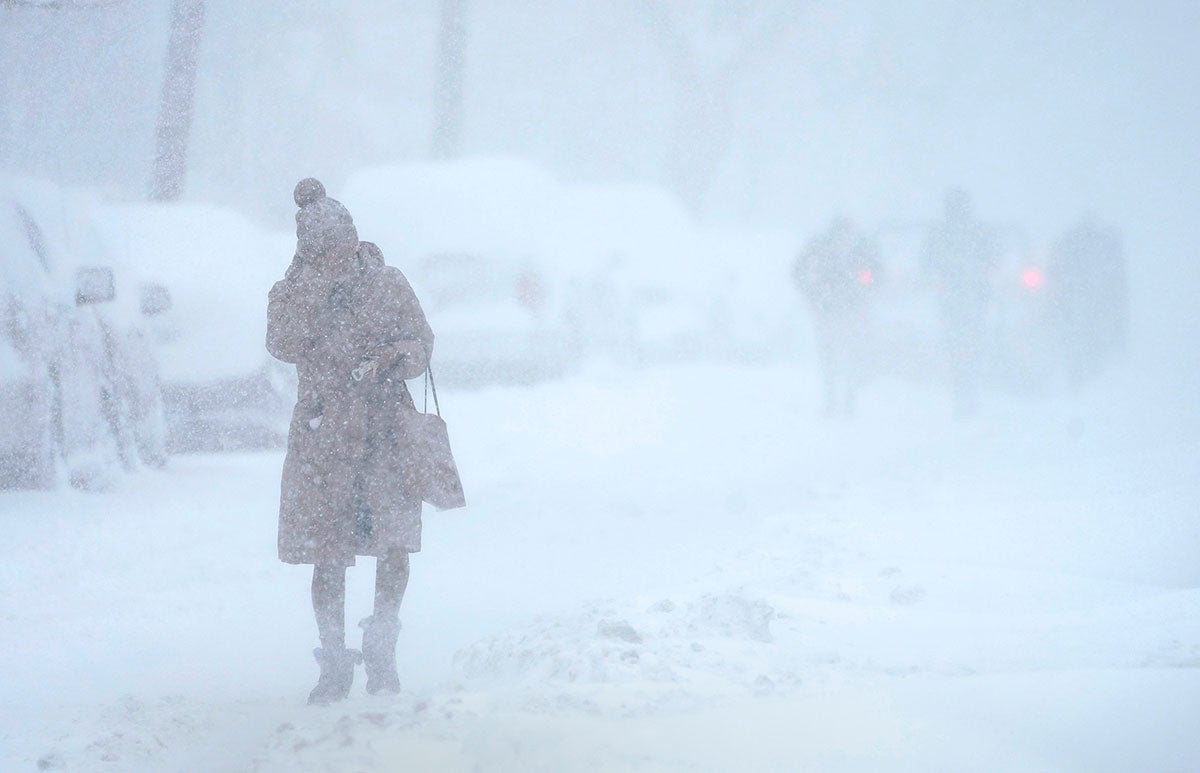Winter Storms Are Hitting Harder Due to Climate Change
Here's what Earthjustice is doing about it.

Even as climate change raises average global temperatures, that doesn’t spell the end of winters. Overall, winters are getting milder and shorter; but recent winters have brought intense snowstorms and record-breaking frost.
As a result, average global sea level has increased eight inches in the last 150 years.
While it may seem contradictory, climate change may be contributing to more extreme winter weather. As the warming atmosphere traps water vapor later and later into the year, that precipitation leads to heavier snowfall when the temperatures do drop.
Another factor is the rapidly warming Arctic, which some scientists believe is weakening the jet stream and causing disruptions of the polar vortex. The polar vortex refers to bands of wind and low air pressure near the North Pole, which normally lock cold air over Arctic. When those bands break down, icy air can escape south in the form of freezing winters.
In 2021, record-breaking snowstorms knocked out power for nearly 4.5 million homes in Texas as icy conditions and heating demands overwhelmed much of the region’s power supply. More than a hundred people died, and the storms caused an estimated $295 billion in damage.
Why is this happening?
Human activity is causing rapid changes to our global climate that are contributing to extreme weather conditions.
When fossil fuels are burned for electricity, heat, and transportation, carbon dioxide, a greenhouse gas that traps solar radiation, is released into our atmosphere.
Over the past century, massive increases in carbon dioxide, methane, and other greenhouse gas emissions have caused the temperature on our planet to rise. That spike in global temperatures is fueling climate disasters that will only get worse unless we take action. Experts warn that we are running out of time to dramatically cut pollution to avoid climate catastrophe.
What is Earthjustice doing to help?
Americans across the political spectrum are feeling the urgency of our climate deadline and calling for action on a scale that matches the threat. We need bold and equitable climate solutions to move towards a pollution-free, 100% clean energy future.
Our attorneys use the law and partner with communities on the frontlines to tackle the climate crisis. Here are a few examples of the goals we’re working on and the progress we’ve achieved:
- Move beyond fossil fuels. Earthjustice has secured the retirement of coal plants generating more than 65,000 megawatts a year and stopped the buildout of more than 8,500 megawatts of methane gas. This work has prevented $16.9 billion a year in climate-related costs.
- Clear the way for clean energy. We level the playing field and ensure that utilities, regulators, and grid operators don’t discriminate against clean energy. We have driven 157 coal-fired power units in 23 states into early retirement and are pushing state regulators to make a faster, more affordable transition to clean energy. We are also challenging the Trump administration’s false invocation of emergency powers to prop up costly, polluting fossil fuel plants and stick consumers with the bill.
- Electrify our economy. Transportation generates more greenhouse gas emissions than any other economic sector in the U.S. Advocacy by Earthjustice and our partners has pushed 10 states home to 100 million people to adopt a zero-emission trucks rule. California, which has the power to shape national industry standards, has also committed to electrifying locomotives and public buses. And at the federal level, we’ve helped secure billions in funding to electrify ports, school buses, and USPS mail trucks.
- Make sure everyone benefits by centering environmental justice and expanding access to clean energy in every community. We supported Puerto Rican advocates in securing $1 billion in federal funding to bring rooftop solar power to low- and moderate-income communities across the territory. This investment will help households keep the power on when hurricanes strike — and we’re fighting for additional funding so that everyone in Puerto Rico can have reliable, safe, and affordable energy.
- Take on the next frontiers. To name just a few efforts, we’re protecting climate forests, promoting climate-smart agriculture, stopping the petrochemical buildout, and challenging dirty hydrogen and carbon capture projects that prolong the use of fossil fuels.
This fight to preserve a livable planet touches everyone. Together, we can drive transformative change in service of the earth and justice for its people.
Learn more about how climate change is fueling extreme weather.